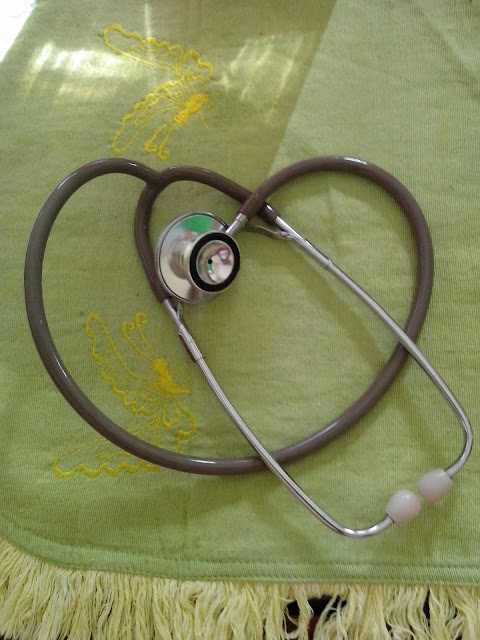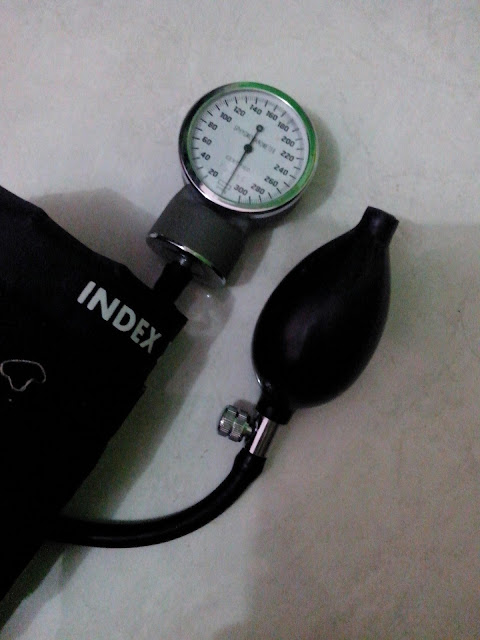A stethoscope is a medical device for listening to sounds inside the body. The initial stethoscope was invented in the early 19th century by French physician Ren� Laennec, but was actually trying to achieve a rather different end: doctor-patient distance....
Saturday, May 31, 2014
LAWTON SCALE FOR INSTRUMENTAL ACTIVITIES OF DAILY LIVING
The Lawton scale evaluates more sophisticated functions than the
Katz index. Patients or caregivers can complete the form in a few minutes. The
first answer in each case—except for 8a—indicates independence, the second
indicates capability with assistance, and the third indicates dependence. In
this version, the maximum score is 29, although scores have meaning only for an
individual patient, as when declining scores over time reveal deterioration.
Questions 4 to 7 tend to be gender-specific; modify them as necessary.
| ||||||||||||||||||||||||||||||||||||||||||||||||||||||||||||||||||||||||||||||||||||||||||||||||||||||||||||||
Wednesday, May 21, 2014
Tools for Assessment of Geriatric Care
Numerous tools are available to help you perform a methodical functional
assessment. Some widely used methods are discussed here.
Read More
A functional assessment is used to evaluate the
older adult's overall well-being and self-care abilities. It will help
you identify individual needs and care deficits, provide a basis for developing
a plan of care that enhances the abilities of the older adult with coexisting
disease and chronic illness, and provide feedback about treatment and
rehabilitation. You can use the information to identify and match the older
adult's needs with such services as housekeeping, home health care, and day care
to help the patient maintain independence.
Katz index
The Katz Index of Activities of Daily Living is a widely used tool
for evaluating a person's ability to perform six daily personal care activities:
bathing, dressing, toileting, transfer, continence, and feeding. It describes
his functional level at a specific point in time and objectively scores his
performance. (See Katz Index of Activities of
Daily Living, pages 804 and 805.)
Lawton scale
Another widely used tool, the Lawton Scale for Instrumental
Activities of Daily Living, evaluates the ability to perform more complex
personal care activities. It addresses the activities needed to support
independent living, such as the ability to use the telephone, cook, shop, do
laundry, manage finances, take medications, and prepare meals. The activities
are rated on a three-point scale, ranging from independence to needing some help
to complete disability. (See Lawton Scale for
Instrumental Activities of Daily Living, page 806.)
Barthel index and scale
The Barthel Index evaluates the following 10 self-care functions:
feeding, moving from wheelchair to bed and returning, performing personal
toilet, getting on and off the toilet, bathing, walking on a level surface or
propelling a wheelchair, going up and down stairs, dressing and undressing,
maintaining bowel continence, and controlling the bladder. Each item is scored
according to the degree of assistance needed; over time, results reveal
improvement or decline.
A similar scale—called the Barthel Self-Care Rating Scale—is a
more detailed scale to evaluate function. Both tools provide information to help
you determine the type of assistance needed.
OARS Social Resource Scale
The Older Americans Research and Service Center (OARS) Social
Resource Scale is an assessment tool developed at Duke University in 1978. A
multidimensional tool, it evaluates level of function in the following five
areas:
-
social resources
-
economic resources
-
physical health
-
mental health
-
activities of daily living.
The primary activities of daily living (ADLs) include mobility,
dressing, personal hygiene, eating, and toileting or continence factors.
However, ADLs may be expanded to include instrumental activities (shopping,
household maintenance, using the telephone, paying bills, administering
medications, cooking and laundry) and advanced activities (voluntary social
activities, occupational activities, and recreational activities).
Each area is scored on a scale of 1 to 6. At the end of the assessment, a
cumulative impairment score is determined. The lower the score, the less the
degree of impairment.
Subscribe to:
Comments (Atom)
Powered by Blogger.



